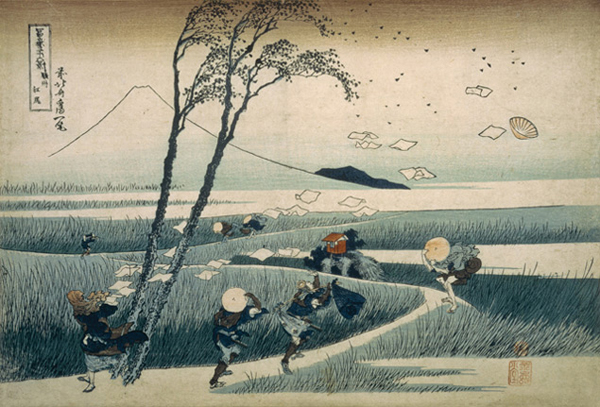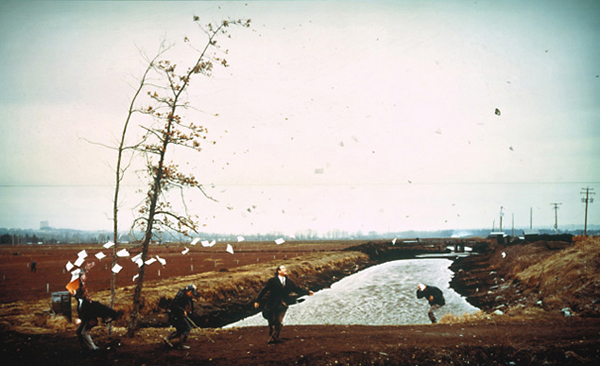Because it was such a pleasant chore last time, I've decided to reprise my virtual print collecting expedition. Finding a golden trove like Davidson Galleries out of Seattle, WA (last time I went searching for viscosity prints) was a stroke of luck that opened my eyes to the vastness of printmaking as a genre.
Snow in the Countryside (1909) by Kamisaka Sekka
These selections draw from more traditional roots: some Japanese woodcuts and a talented contemporary artist thrown in for contrast. This print by Sekka has all the movement of a fierce winter storm, and it's achieved with so few shapes; it's a testament to the striking simplicity and grace of the discipline. I just enjoy looking at these when I click through, and I hope you do, too.
Of all the Japanese woodcuts, those by Kawase Hasui, in particular, had a way of capturing the essence of fleeting nature, a gust of wind or a snowflake melting on a windowpane, that could transport the viewer into the moment, into the light of the past. The glowing grey-blue gradation in this Shōwa-era print deftly depicts the rising crystalline moonlight. One can almost imagine the feel of the cold granite in the foreground, smoothed over centuries by nightly winds rushing through the valley below.
Kiyomizu Temple Kyoto (1933) by Kawase Hasui
Now I realize the last image here is not strictly a print, but the concept of remaking Ukiyo-e via digital photography -- and executing it so immpecably -- meant I had to include it. The Canadian artist, Jeff Wall (1946 - ), is a master in a highly orchestrated, directorial style of photography. According to Greg Fallis of Sunday Salon, hosted by Utata.org:


A great deal of Wall’s work seems to be an attempt to be such a “painter.” He even recreates the work of painters he believes met Baudelaire’s standard. For example, Wall is quite taken with the woodcuts of Hokusai, a Japanese artist who lived in the late 18th and early 19th century. In the following woodcut, Hokusai depicted a sort of Cartier-Bresson moment…a decisive moment.

Wall recreated the scene on a cranberry farm in rural Canada. In keeping with his obsessive, directorial style, he staged the photograph with great care. He selected the location to match Hokusai’s wind-bent trees. He had the subjects crouch and hold their hats similar to Hokusai’s. He recreated the hat that was blown away, and the scattering of papers. And yet he made it a completely contemporary image by setting it in a Canadian landscape and including the line of telephone poles.

Wall’s photo has all the drama and spontaneity of Hokusai’s woodcut. There is a wonderful sense of immediacy and tension. How was he able to create such an atmosphere and still reproduce Hokusai’s image so faithfully? By using the magic of digital imagery. Wall’s image is actually a composite of more than 100 separate photographs taken over two winters.
Fallis continues to explain how huge these prints are on display, taking up an entire wall of a gallery on a lightbox, but beyond this reincarnation of a great Hokusai print, its accuracy and emotion, I find the philosophy behind the work to be inspired and thoughtful. Just as in the prints by Hasui and Sekka, the everyday is elevated to historical significance through the remarkable rendering of these scenes.

.jpg)
No comments:
Post a Comment
What say you?